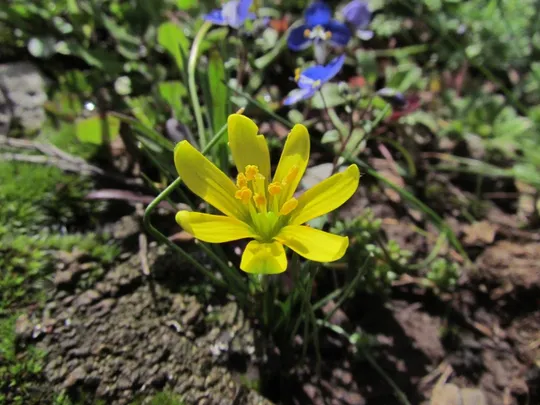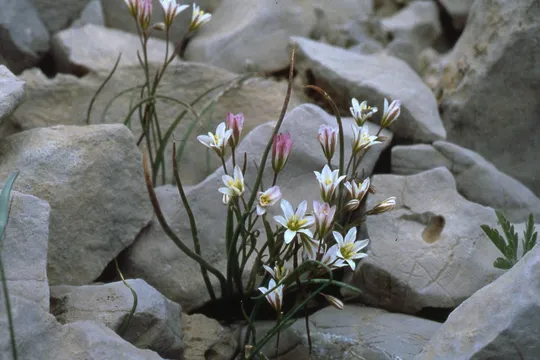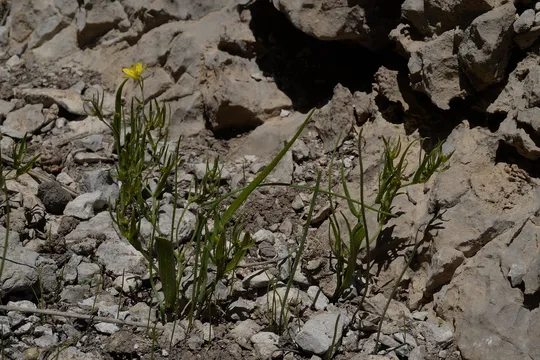Day's Gagea
Gagea dayana
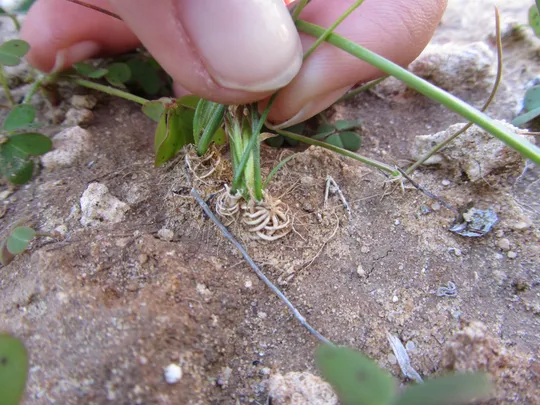

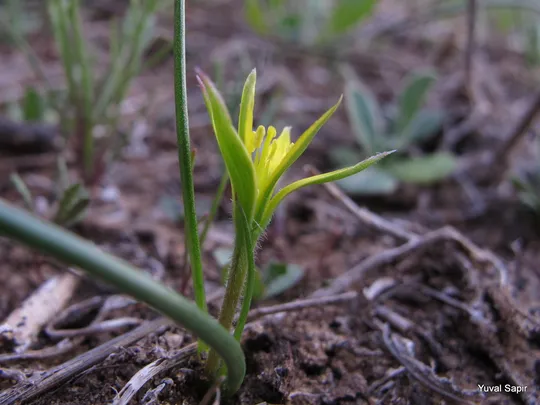
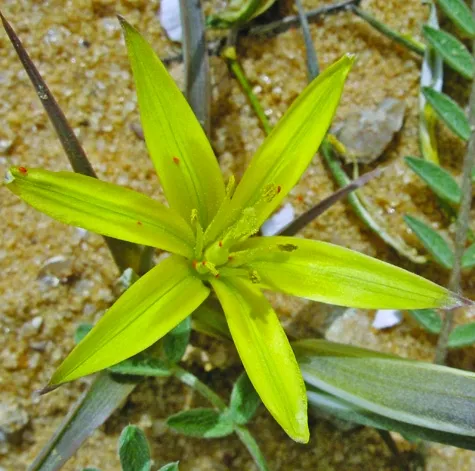
Gagea
dayana
ssp. dayana currently grows
and grew in the past in only two regions on the coastal plain –
in the Sharon and in the Philistian Plain. In the Philistian Plain, it was
once found in three
sites in the Tel Aviv area and Bet Oved; in the rare species survey only a single site was found in 1996-1997 in the Nes Tsiona hills. In the Sharon, it was known until the 1970s from at least eight sites, but in the 1996-1967 rare species survey, only four were
found – at Bitan Aharon, in the Bney Tsion Nature
Reserve, in the Hadasim
Reserve and at Yakum. In the past
it grew in the Udim (Sha’ar Poleg) and in the “Iris atropurpurea” (Bet Hanan) nature reserves.
Sandy Hamra soil on slopes in sunlit areas or
partially shaded sites, between shrubs and in the Thymelaea hirsute and Helianthemum
stipulatum or Lavandula stoechas community.
The genus Gagea
has 90 species in
the Mediterranean region
and in the temperate regions of
Euroasia. It has a characteristic small bulb made up of a single fleshy bulb
scale that is renewed every year. In Israel, there are seven species and an
additional three species that
are exclusive to Mount
Hermon. This is one of the few genera in the
Liliaceae family that
have yellow flowers. Recently the genus Lloydia
was merged with Gagea, but not all studies support this. Lloydia has
pinkish flowers.
The formal status of the
taxon is a "variety", but in the
past, it was otherwise: Heyn and Dafni (1977 1970) described
the taxon as a
separate subspecies, which it should have remained, according
to Dafni, as the characteristics distinguishing it from the desert populations are clear, it occupies a
different habitat and has a completely allopatric distribution. Michael Zohari wanted to describe this as a new species and he named it “G. sharonensis”
on the Herbarium data sheet, but N. Feinbrun did not accept
this independent status in
the Flora Palaestina. In this exceptional case we propose that the various
varieties of G. Dayana should be considered
different taxons, and given the status of subspecies.
·
The number of sites on which Gagea dayana is found has decreased considerably
during the last 60 years (from 10 to 5) due to intensive development pressure on the coastal plain.
·
The G. dayana
populations are small, mostly single specimens or
sparse populations with tens to hundreds of plants in patches of only a few
hectares.
·
The subspecies is endemic to Israel, and the danger of its
extinction in Israel constitutes a global threat.
Sites where Gagea dayana was found in the past should be re-surveyed as well as all the sites in which its
habitat has survived in
the Sharon and the northern Philistian Plain. G. dayana is a
small plant that is hard to find, and it blooms very early in the season. It should be monitored in the Bney Tsion Nature Reserve.
The subspecies dayana
is endemic to the coastal plain of
southern Lebanon and Israel. The
species was described from Beirut according to a specimen collected by the botanist Day in 1926. In 1982, following the Lebanon War, it became clear that all the plants from sandy habitats which had previously grown in southern Beirut (such as Faidherbia albida) were
probably extinct. Thus G. dayana ssp. Dayana survived only in
Israel. The Bet Oved hills
are the southernmost limit of the taxon in the world.
The second variety, G. dayana the Negev
variety, is a desert taxon that grows
in various countries of the Middle East: Egypt, Turkey,
Northern Iraq,
Iran and Afghanistan. A very close species – Gagea granatellii
is found in the North African deserts. It is
difficult to distinguish from G.
dayana species. Thus, the “Negev variety” can probably be considered (also according to Amots Dafni, who studied the
genus in Israel) a widely distributed desert taxon in sandy areas
in the Sahara and the Middle East.
Gagea dayana ssp. dayana
is a geophyte sub-endemic
to the coastal plain of
Israel and Lebanon, which
had survived in Israel at only five sites. Its habitat and range are the most sensitive in Israel due to extensive development. It is a sub-endemic taxon, which is now probably extinct from the Beirut area of and so its current status is
that of a taxon that is endemic only to Israel’s coastal plain. We should regard this
“endemic variety” as an independent taxon, and thus prioritize it for conservation.
דפני, א.1970. מחקר ביוסיסטמטי בסוג זהבית בישראל ובאזורים סמוכים. עבודת גמר, המחלקה לבוטניקה, האוניברסיטה העברית בירושלים
Current Occupancy Map
| 1000 squre meter pixel | 5000 squre meter pixel | 10000 squre meter pixel | |
|---|---|---|---|
| number of observations | 0 | 0 | 0 |
| in total pixels | 0 | 0 | 0 |
| Family | Liliaceae |
| Classification | On the endangered species list |
| Ecosystem | Coastal area |
| Chorotype | Eastern Mediterranean (the sub-specie) |
| Conservation Site | Bney Tsion Reserve |
| Rarity |
1
3
6
|
|---|---|
| Vulnerability |
0
4
4
|
| Attractiveness |
0
0
4
|
| Endemism |
0
3
4
|
| Red number |
1
5.3
10
|
| Peripherality | 0 |
| IUCN category | DD EW EX LC CR EN VU NT |
| Threat Definition according to the red book | Critically endangered |
 Based on:
Based on:
